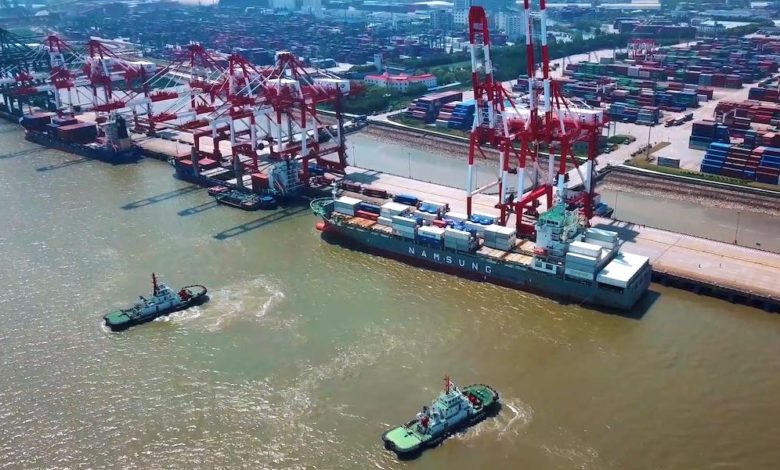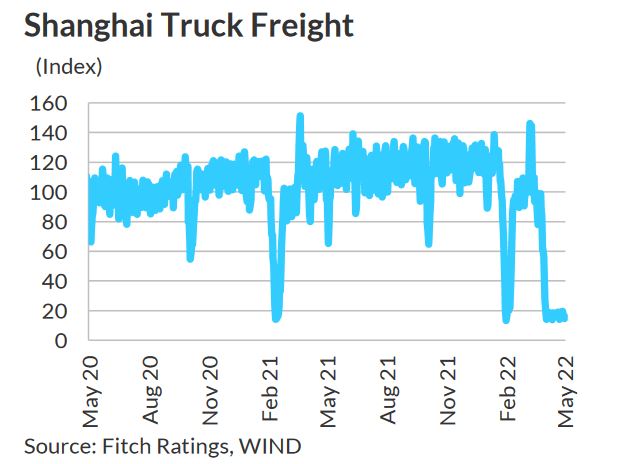Shanghai authorities claim city will open up next week

May 20 has been given as the first official deadline for Shanghai, China’s largest city, to open up.
The metropolis, home to the world’s largest container port, entered lockdown in late March for what was meant to be 10 days as part of China’s strict zero-covid policy. Most of the city’s 25m population have been living in lockdown ever since with a deleterious effect on local transport as the trucking chart below illustrates.

Closed loop productions are unacceptable as a long-term solution for German companies to operate in China
Up until today, Shanghai authorities had been unwilling to give a firm date for when the city would reopen with persistent cases of covid flaring up across its 16 districts.
Vice mayor Wu Qing said at a news conference today that an orderly opening would now proceed in the middle of this month, using a Chinese term that refers to the period between May 11 and 20.
In terms of port operations, Peter Sand, chief analyst at container platform Xeneta, told Splash earlier that it would take anywhere from four to eight weeks for normal operations to resume, while gateway terminals in the US and Europe have repeatedly been warned by container analysts to brace for a so-called whiplash effect from Shanghai’s reopening.
The reopening cannot come soon enough with many international manufacturers reporting extreme distress and pessimism at how local authorities have handled the Shanghai outbreak.
A flash survey carried out from May 6 to 8, polling 460 member companies of the German Chamber of Commerce in China, shows that only a small number of firms have been able to operate and resume production in the People’s Republic. Foreign employees are increasingly planning to leave the country due to China’s strict covid strategy, the survey showed.
In areas affected by lockdowns, companies can only restart their operations under constraints. Just 19% of the surveyed German companies have permits to produce under adverse conditions in such areas. Of those allowed to run operations under lockdown, many only operate at less than half of their full production capacity. Logistics problems, low availability of staff and uncertainty caused by sudden changes in policies are the main reasons for hampering the increase of production capacity, the survey showed.
Nearly one third (28%) of foreign employees of the surveyed companies plan to leave China due to covid-related measures, with 10% planning to do so even before their current employment contract ends.
“It will be extremely challenging for German companies to substitute these employees with new staff from abroad, considering how the current covid outbreak in China is handled”, said Maximilian Butek, executive director of the German Chamber of Commerce in Shanghai. “The current circumstances under which German companies have to operate in China can only be short-term solutions in emergency situations. Closed-loop productions are unacceptable as a long-term solution for German companies to operate in China.”
Among other key findings from the survey, it turns out that 73% of the respondents’ business operations are in areas under full or partial lockdown
At least 32 cities across China are now under full or partial lockdown, impacting up to 220m people, according to calculations from international news channel CNN.
Authorities in China have this week imposed a de facto international travel ban, forbidding citizens from going overseas for non-essential reasons.
In a statement Thursday, the Chinese National Immigration Administration said it would tighten its reviewing process on issuing travel documents such as passports, and strictly limit those looking to leave.
